Iran International Pursues Legal Action Against Tehran’s TV Jamming
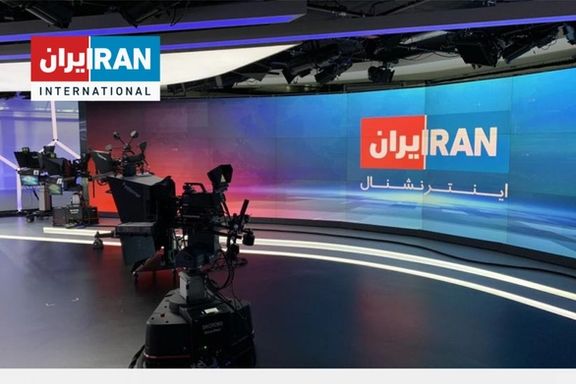
After Iran resorted to orbital jamming to limit access to Iran International, the news network has launched a lawsuit to legally pursue the case through international bodies.

After Iran resorted to orbital jamming to limit access to Iran International, the news network has launched a lawsuit to legally pursue the case through international bodies.
Iran International said in a statement on Tuesday that the Islamic Republic has, in recent days, resumed orbital jamming of international satellite transmissions, which is against international law.
The signals directed at satellites are beamed into space from a site near Karaj, west of Tehran, amid escalation of the protests – sparked by the death of Mahsa Amini, the 22-year-old woman who was killed in custody of hijab police.
Iran International CEO said that Tehran’s move is a blatant violation of international treaties and regulations of satellite broadcast rights, noting that the Islamic Republic had barely resorted to orbital jamming after 2009 and only used terrestrial jamming to prevent people from watching satellite TV channels.
Tens of million of people In Iran watch satellite TV channels such as Iran International because television in Iran because only the government owned TV is allowed to broadcast, echoing official propaganda.
A non-profit Iranian American organization the National Union for Democracy in Iran (NUFDI), called on US Secretary of State Antony Blinken Tuesday to revoke the current waiver of secondary sanctions relating to dealings with the Islamic Republic’s state Broadcaster – or IRIB -- and implement sanctions on Tehran’s propaganda apparatus.
The Obama administration struck a deal in 2013 with Iran that waived existing sanctions on the IRIB as part of an agreement reached under the International Telecommunications Satellite Organization, or ITSO.
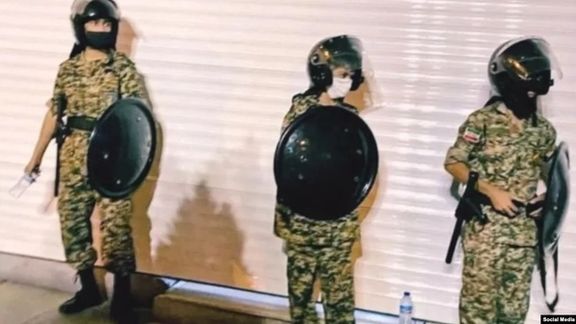
One of Iran’s largest independent anti-poverty charities says a large number of minors have been recruited to attack protesters in exchange for a few bags of essential foods.
Over 800 members and supporters of the Imam Ali Society (IIS) issued a statement on Wednesday, saying that the Islamic Republic’s authorities have employed children, who used to be under the protection of IIS, as part of their club-wielding forces against the antigovernment protesters.
Instead of "teaching peace and friendship,” the Islamic Republic recruited them and gave them batons to crack down on the popular protests, IIS members said.
The statement was released following the publication of photos of children under 18 years of age wearing helmets and carrying batons in some streets of the capital Tehran to suppress protesters. In some pictures, some of these children are not even wearing shoes, which social media users have described as a sign of their families' "poverty".
The Imam Ali Society was an independent NGO with a nationwide network doing concrete charity work, while the state has official charities that have turned into economic conglomerates.
Iranian judiciary arrested Sharmin Meymandinejad in 2020, who founded the Imam Ali Popular Students Relief Society in 1999, with two other members of the society on charges of “insulting” the founder of the Islamic Republic Rouhollah Khomeini and his successor Ali Khamenei as well as “acting against national security.” Iranian hardliners have alleged the society is aligned with foreign powers hostile to Iran.
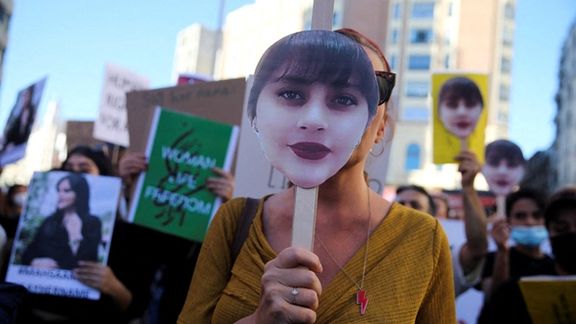
Iranian officials have been trying to question whether Mahsa Amini was killed in police custody and this attempt has reached Hezbollah leader Hassan Nasrallah.
Nasrallah, whose militant movement was created by Iran in early 1980s and has been receiving money and weapons from Iran ever since, told media in Lebanon that Amini’s death was a “vague incident”, and it was a plot to weaken the Islamic Republic and create regional tensions.
“The Iranian state is a target and so any incident is exploited to incite people against this state,” Nasrallah claimed.
The nationwide protests and a wave of civil disobedience that followed Amini’s death has led to a serious challenge for the Islamic Republic. Security forces have killed more than 150 protesters and innocent onlookers in the streets, which could fuel more unrest in the coming weeks.
Any weakening of the Iranian regime would be dangerous to its proxies, such as the Hezbollah that almost fully depend on Tehran’s support.
Iranian officials first tried to argue that the 22-year-old woman arrested by the hijab police had an existing illness, which they said caused her to go into a coma in a police station.
After Iran International published her hospital CT scan showing a broken skull, this version could not be supported any longer.
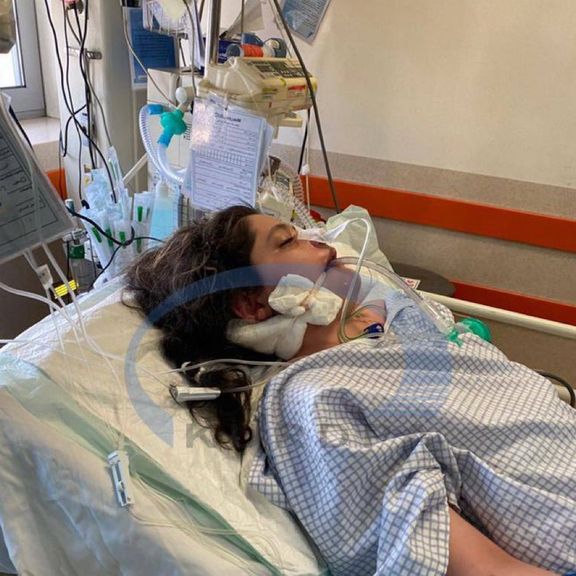
On Tuesday, the chief of Iran’s Judiciary Mohsen Ejei tried to argue that Mahsa Amini was arrested in full public view. However, by all indications, she was hit in the head after she was pushed into a police van where there were no witnesses, or none that has dared to speak out.
One eyewitness who spoke with Amini in the police station told Iran International September 26 that she was complaining of pain in the head before she passed out and taken to hospital, where she arrived in a coma.
The most incredible, however, claim came from an ‘analyst’ on Iran-backed Al Manar TV in Lebanon. While the video of his remarks exists, we could not identify him.
The TV guest said that Amini was an Israeli agent because she was a Kurd with connections to Kurdish insurgent groups fighting against the Islamic Republic. Presumably, the Kurdish groups have ties to Israel, which sent Amini to Iran “with a suicide pill” and she “walked into a police station” and used the pill to kill herself so that Iran could be blamed.
These remarks are typical of diatribe and conspiracy theories the Islamic Republic and its proxies use to try to discredit those they regard as enemies or rivals and feed ideologically convenient disinformation to their followers.
Iranian President Ebrahim Raisi, Foreign Minister Hossein Amir-Abdollahian and even Supreme Leader Ali Khamenei have insisted that the government is investigating Amini’s death. But after three weeks, no official has been named as responsible for her arrest and transfer to the police station. No police officer has been suspended or arrested, while officials act expeditiously against critics and quickly “identify” anti-regime "lawbreakers," such as journalists and activists.

Iran's exiled Prince Reza Pahlavi has hailed the protests and strikes by different social groups in the country, describing them as the right way to victory.
In a tweet on Tuesday, the son of the late Shah of Iran said, “Multiple reports indicate the spread of strikes from cultural and educational sectors to the service and industry sectors,” calling it “a step in the right direction.”
“Nationwide strikes alongside nationwide protests will bring this regime to its knees,” Pahlavi added.
In an interview with Jerusalem Post on Monday, October 3, he described the current uprising in the country as the beginning of a revolution, saying, “We are indeed in more than tumultuous times in my country. We are in revolutionary times.”
“The popular uprisings we are seeing in hundreds of cities and towns across Iran have a very clear goal: the overthrow of the Islamic Republic and the establishment of a secular democracy based on human rights,” he said.
Earlier in the day, he also called US President Joe Biden not to enter an agreement with Tehran that would financially benefit the Islamic Republic’s repression machine.
As protests in Iran – sparked by the death of 22-year-old Mahsa Amini in police custody -- continue well into their third week, pundits and politicians speculate that Iranians are more angry than scared, and the government needs to be wise enough not step on mental mines, warning that suppression will make the protests more violent.
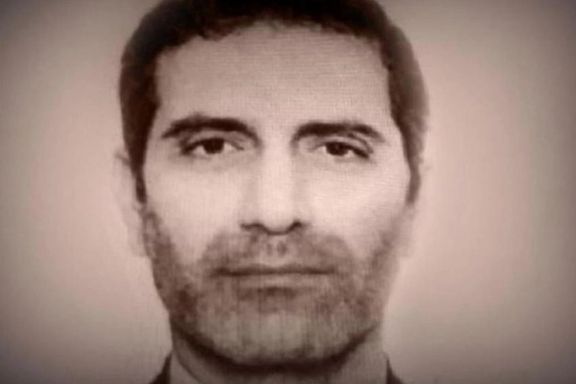
A court in Belgium has canceled the ban on the extradition of Iranian diplomat Asadollah Asadi, sentenced to 20 years in jail on a terrorism conviction.
Local Belgian media reported on Tuesday that a Brussels court ruled that Asadi may be extradited to Iran, thereby paving the way for a fiercely criticized prisoner exchange. The exchange would allow Asadi to be swapped with Belgian aid worker Olivier Vandeecasteele, who has been held in Iran since February, according to Het Nieuwsblad.
The temporary ban on the extradition of the convicted diplomat was announced by the Brussels Court of Appeal late in July following numerous complaints after the Belgian Parliament ratified a controversial prisoner swap treaty with Iran on July 20.
The Iranian exiled opposition group Mujahedin-e Khalq Organization (MEK) mounted a fierce campaign against the deal, challenging the possible extradition."The court has now declared the plaintiffs' question unfounded," said lawyer Khloë Georgiev, who represents Vandecasteele.
In June, Belgian MPs ratified a deal to allow the exchange. At the time, Prime Minister Alexander De Croo argued that it was the only way to get Vandeesteele back home safely. Recently appointed Foreign Minister Hadja Lahbib stresses that all diplomatic channels have been exhausted.
Assadi is imprisoned for “attempted murder and involvement in terrorism” for his role in plotting to bomb a gathering of the MEK near Paris in 2018.
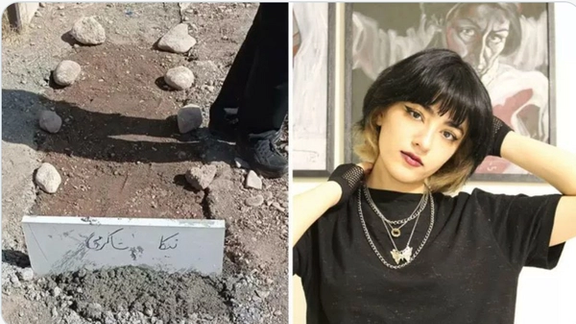
Amid ongoing protests, many Iranians are mourning dozens of teens and young people, as names and details of the brutality against them emerge on social media.
Iran Human Rights, a Norway-based rights organization, said Tuesday that at least 154 protesters, including nine children have been killed by security forces during the recent protests. Very little is known about most of the victims as families are pressured to stay silent if they want the bodies of their loved ones to be handed over to them.
On Monday security forces stole the body of a teen victim, Nika Shakarami, from the morgue while her family were waiting at a cemetery in her late father’s hometown of Khorramabad for the body to arrive. They buried the young girl in a village about forty kilometers away, supposedly to prevent her funeral from turning into protests.
Thousands have shared photos and a video showing the 16-year-old Nika, shyly but playfully singing a song into a microphone. Nika was studying art in college and training to become a barista.
Nika was last heard from when she called a friend from the protests on September 20 saying she was being chased by security forces during a protest in Tehran against the killing of Mahsa Amini -- a 22-year-old girl killed in police custody earlier that week.
Nika’s body was found in a morgue at Kahrizak detention center ten days later. Authorities said she died “falling from a height” but refused to allow her mother and relatives see anything other than her face in the morgue. Her aunt said later that her nose and skull were smashed, apparently by multiple blows to her head.
Authorities later arrested Nika’s aunt and uncle after they publicized her death. Sources close to the family say the security forces are pressuring the family to say Nika had not been in the protests to reduce her killing to an unrelated murder case.
The Revolutionary Guards (IRGC)-linked Tasnim news agency published a report of the alleged murder of the young girl Tuesday blaming it on people outside the protests.
Tasnim claimed that Nika went to a commercial building kilometers away from the protests where her body was found, although her body was found at a detention center, and suggested that she may have been killed by workers who were resting in the building’s parking.
Eight of the workers have been arrested, Tasnim said, and the case has been referred to a prosecutor for investigation. Many expect the state broadcaster to show someone making a forced confess admitting to the young girl’s murder or blame it on people from among the protesters.
A video has been circulating on social media of the mother of 18-year-old Parsa Rezapour, sitting and wailing on a sidewalk in Karaj where her son was shot dead. “My child was killed for the sake of freedom … My child was martyred,” she cries.
In a video posted on social media the mother of 23-year-old Hadis Najafi, also shot dead in Karaj, has come forward saying she was shot in the heart, abdomen, and neck. “Her whole body and face showed shotgun wounds,” she says adding authorities hid her death from them and refused to hand her body over to them. Before leaving for the protest she posted a video of herself saying she was taking part because she wanted to remember these day years later “when everything will be different”.